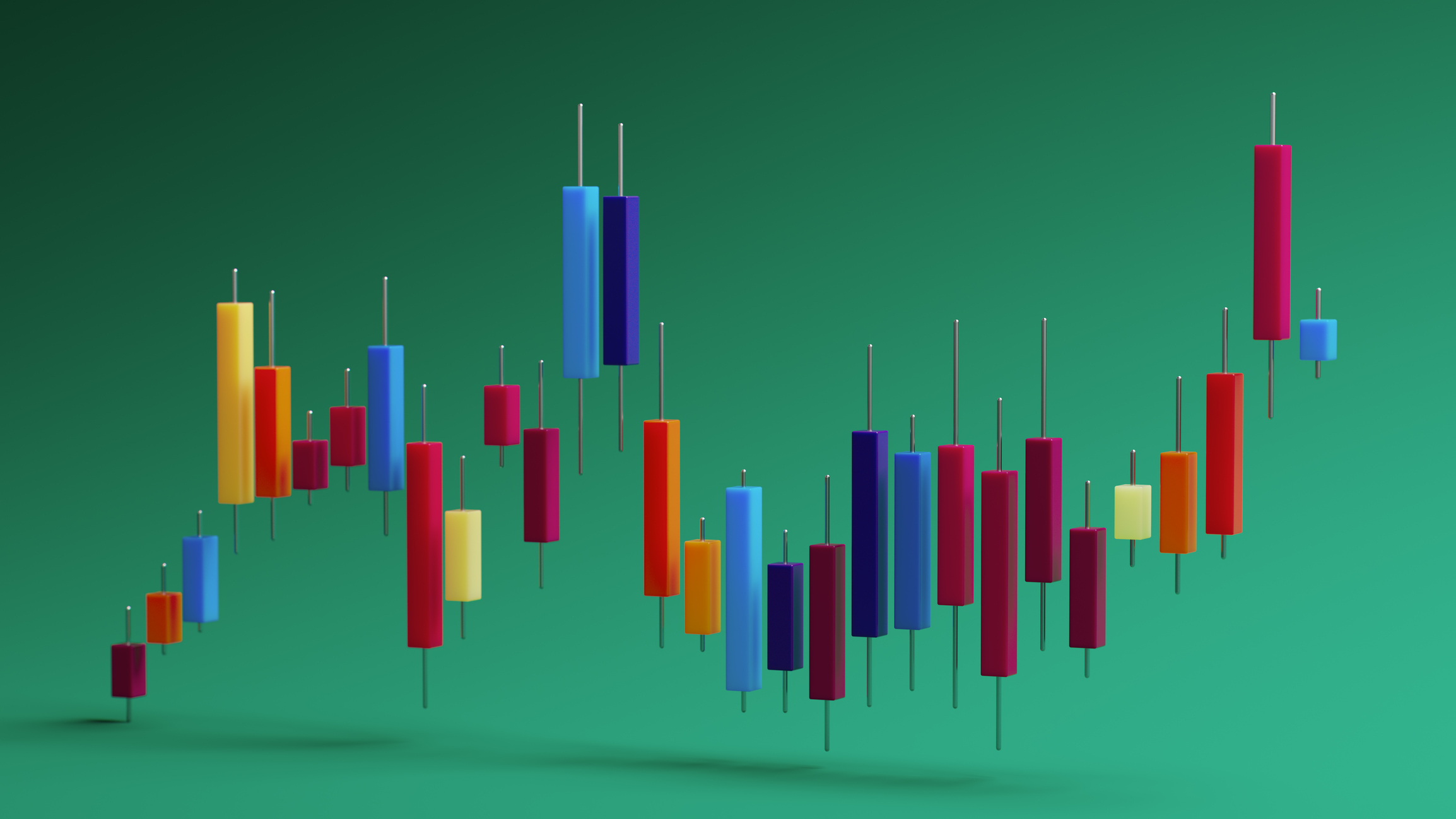Why Bonds Belong in Your Portfolio
Intermediate rates will probably rise another two or three points in the next few years, making bond yields more attractive.


Interest rates are rising and stock prices are falling, so investors naturally start thinking about bonds. But be careful.
Peter Lynch, the manager of Fidelity Magellan fund during its spectacular run in the 1980s, once said, "Gentlemen who prefer bonds don't know what they are missing."
Generally, I agree. Dow 36,000, the book I coauthored, made the case that, because history shows that stocks and bonds are equally risky over the long term and that stocks return an average of four to five percentage points more a year, the obvious choice is stocks.
From just $107.88 $24.99 for Kiplinger Personal Finance
Become a smarter, better informed investor. Subscribe from just $107.88 $24.99, plus get up to 4 Special Issues

Sign up for Kiplinger’s Free Newsletters
Profit and prosper with the best of expert advice on investing, taxes, retirement, personal finance and more - straight to your e-mail.
Profit and prosper with the best of expert advice - straight to your e-mail.
But there are reasons to own bonds. First, in the short term, bonds fluctuate much less than stocks, and you may need a reliable investment because you have a large outlay coming up – a college tuition bill or a down payment on a house, for example.
Second, bonds provide ballast for a portfolio. According to research by Russell Investments, since 1997 the correlation between stock and bond returns has been mainly negative. In other words, when one goes up, the other tends to go down, and vice versa. As a result, you get a smoother ride. Finally, bonds supply reliable income – though recently not much.
Over the past decade, bonds have been especially unproductive investments. Since 2012, the annual yield on a Treasury bond that matures in 10 years has averaged just 2% per calendar year and has never exceeded 3%.
The Vanguard Intermediate Bond Index Admiral (VBILX), a popular mutual fund that owns both government and corporate bonds and charges expenses of just 0.07%, has returned an annual average of just 3.1% over the past 10 years, including interest payments and gains and losses from selling assets. (Nonetheless, I'm a fan of this fund for the long term.)
Lately, rates have perked up. Moody's Seasoned Aaa Corporate Bond yield for the safest debt jumped from 2.5% on Dec. 3 to 3.3% on March 3. That's still only about half the average of the past 40 years.
What Are Bonds?
A bond is an IOU, a promise by a business or government to repay an investor for a loan – typically on a specific date (maturity) and at a specific interest rate (coupon, or yield).
Bonds are actively traded, so a 10-year, $10,000 bond issued with a coupon of 3% might trade a few years later at $7,000. Why? First, the borrower might get into financial trouble, and investors doubt they will be repaid. This kind of credit risk applies mainly to corporations or state, local or foreign governments – not, so far, to the U.S. Treasury. Second, interest rates may rise after you buy your bond, so new, similar bonds are issued at higher coupons. Higher rates make your old bond less attractive, so its price on the market falls.
If you hold your bond to maturity, the lower price in the interim won't matter; you'll get the bond's full face value when it comes due. But if you have to sell sooner, you'll take a loss.
Bonds present one other kind of risk: Inflation diminishes the value of the dollar, so that even when you get your $10,000 at maturity, it will have the purchasing power of, say, $6,000. Some decline in value is inevitable, and that expectation is built into the bond's yield, but inflation may be worse than the market anticipates.
Right now, long-term inflation expectations are extremely low, even though the consumer price index (CPI) soared 7.9% in the 12 months that ended Feb. 28. The St. Louis Federal Reserve Bank extrapolates from TIPS, or Treasury inflation-protected securities, that the annual increase in CPI over the next 10 years will be about 2.7%.
My view is that intermediate (five- to 10-year) rates will probably rise another two or three points in the next few years, making bond yields much more attractive.
How Do I Invest in Bonds?
The choices are vast, but, for many investors, buying individual bonds at the riskier end of the debt spectrum – high-yield or junk debt, for example, or bonds issued by shaky governments – is just too adventuresome. Unless you spend a lifetime examining the nuances of particular bond issues, you will probably get better returns at much the same risk with stocks. I am not fond of individual municipal bonds, either. Yes, interest is exempt from federal taxes, but munis, accordingly, have lower yields.
Buying individual government bonds through a broker or directly from the U.S. Treasury is a reasonable option. But owning a bond, or even several, locks you into today’s rates or forces you to take a loss if rates rise.
The best alternative is a mutual fund, whose assets evolve. For instance, if a bond fund has an average maturity of five years, about one-fifth of its holdings will come due in any 12-month period. The fund manager (or the computer algorithm, in the case of index funds) will then decide to buy new bonds with the cash from its maturing bonds, and, if rates are rising, those bonds will have higher yields.
And a fund manager can shift to higher yields by deploying cash from new investors, who tend to flock to bond funds as rates rise. Some of the best funds leaven their safer holdings with riskier debt to boost yields.
When looking at specific funds, decide how much volatility you can tolerate by checking out the duration, a figure expressed in years that indicates the sensitivity of a fund's portfolio to interest rate increases. For example, the Fidelity Long-Term Treasury Bond Index (FNBGX) has a duration of over 18 years, which means if rates rise 1%, the fund's value will fall about 18%. That's risky. (The value, of course, will shoot up if rates fall.)
Although I have been impressed over the years with many active bond fund managers, the expenses they charge can eat up returns when yields are low. For example, one of the largest funds, the Pimco Total Return (PTTAX), which owns a mix of high-quality government and corporate bonds, charges 0.8% and has had an average annual return over the past five years of 3.0%. In the same asset category, I like the Fidelity Investment Grade Bond (FBNDX) better. Expenses are 0.45% for a fund whose average annual return for the past five years is 3.6%.
By contrast, the Vanguard Long-Term Corporate Bond (VCLT), an exchange-traded fund based on an index, has an expense ratio of just 0.04%. It's an excellent fund if you are willing to accept more risk. Holdings are investment grade, but just barely, with 88% of assets rated A or BBB. And the fund has a duration of more than 14, so it's sensitive to rate swings. But more risk, more reward: The fund has returned an annual average of 5.4% over the past five years.
Also recommended is the T. Rowe Price Total Return (PTTFX), which has about one-fourth of its assets rated below investment grade. With an expense ratio of 0.46%, the mutual fund has returned a five-year average of 4.0%. Its bonds mature in an average of eight years, so if rates rise, the portfolio's yield will rise, too.
Another way to protect against rising interest rates is the SPDR Bloomberg Barclays 1-10 Year TIPS (TIPX), an ETF with expenses of 0.15%. TIPS become more valuable as inflation and interest rates increase. Technically, TIPS can have negative yields, as some do now, but the income from the bond gets enhanced when inflation rises by adjustments to the principal.
If rates do rise, returns may soon reach the 5% range for many bond funds. But higher rates, remember, also have the effect of depressing economic growth, which in turn can force borrowers into default. Bond investing is always a matter of balance: long versus short maturities; risky versus safer credits. No more so than now.
James K. Glassman chairs Glassman Advisory, a public-affairs consulting firm. He does not write about his clients. He owns none of the securities mentioned. His most recent book is Safety Net: The Strategy for De-Risking Your Investments in a Time of Turbulence. You can reach him at James_Glassman@kiplinger.com.
Profit and prosper with the best of Kiplinger's advice on investing, taxes, retirement, personal finance and much more. Delivered daily. Enter your email in the box and click Sign Me Up.

-
 Control vs Protection Quiz: Which Trust Do You Need?
Control vs Protection Quiz: Which Trust Do You Need?Quiz Take this simple quiz to discover whether a revocable or irrevocable trust should be the cornerstone of your estate plan.
-
 Should You Use Buy Now, Pay Later Options to Finance Your Vacation?
Should You Use Buy Now, Pay Later Options to Finance Your Vacation?Many travel companies are letting users pay in installments. But is "buy now, pay later" a smart financial decision?
-
 Best Mutual Funds to Invest In for 2026
Best Mutual Funds to Invest In for 2026The best mutual funds will capitalize on new trends expected to emerge in the new year, all while offering low costs and solid management.
-
 Best Mutual Funds to Invest In for 2026
Best Mutual Funds to Invest In for 2026The best mutual funds will capitalize on new trends expected to emerge in the new year, all while offering low costs and solid management.
-
 Santa Claus Rally at Risk as Tech Stocks Slump: Stock Market Today
Santa Claus Rally at Risk as Tech Stocks Slump: Stock Market TodayThe Nasdaq Composite and Dow Jones Industrial Average led today's declines as investors took profits on high-flying tech stocks.
-
 Gold and Silver Shine as Stocks Chop: Stock Market Today
Gold and Silver Shine as Stocks Chop: Stock Market TodayStocks struggled in Friday's low-volume session, but the losses weren't enough to put the Santa Claus Rally at risk.
-
 The Santa Claus Rally Officially Begins: Stock Market Today
The Santa Claus Rally Officially Begins: Stock Market TodayThe Santa Claus Rally is officially on as of Wednesday's closing bell, and initial returns are positive.
-
 'Humbug!' Say Consumers, Despite Hot GDP: Stock Market Today
'Humbug!' Say Consumers, Despite Hot GDP: Stock Market Today"The stock market is not the economy," they say, but both things are up. Yet one survey says people are still feeling down in the middle of this complex season.
-
 Stocks Rise to the Spirit of the Season: Stock Market Today
Stocks Rise to the Spirit of the Season: Stock Market TodayInvestors, traders and speculators are beginning to like the looks of a potential year-end rally.
-
 Nasdaq Leads as Tech Stages Late-Week Comeback: Stock Market Today
Nasdaq Leads as Tech Stages Late-Week Comeback: Stock Market TodayOracle stock boosted the tech sector on Friday after the company became co-owner of TikTok's U.S. operations.
-
 Cooler Inflation Supports a Relief Rally: Stock Market Today
Cooler Inflation Supports a Relief Rally: Stock Market TodayInvestors, traders and speculators welcome much-better-than-hoped-for core CPI data on top of optimism-renewing AI earnings.